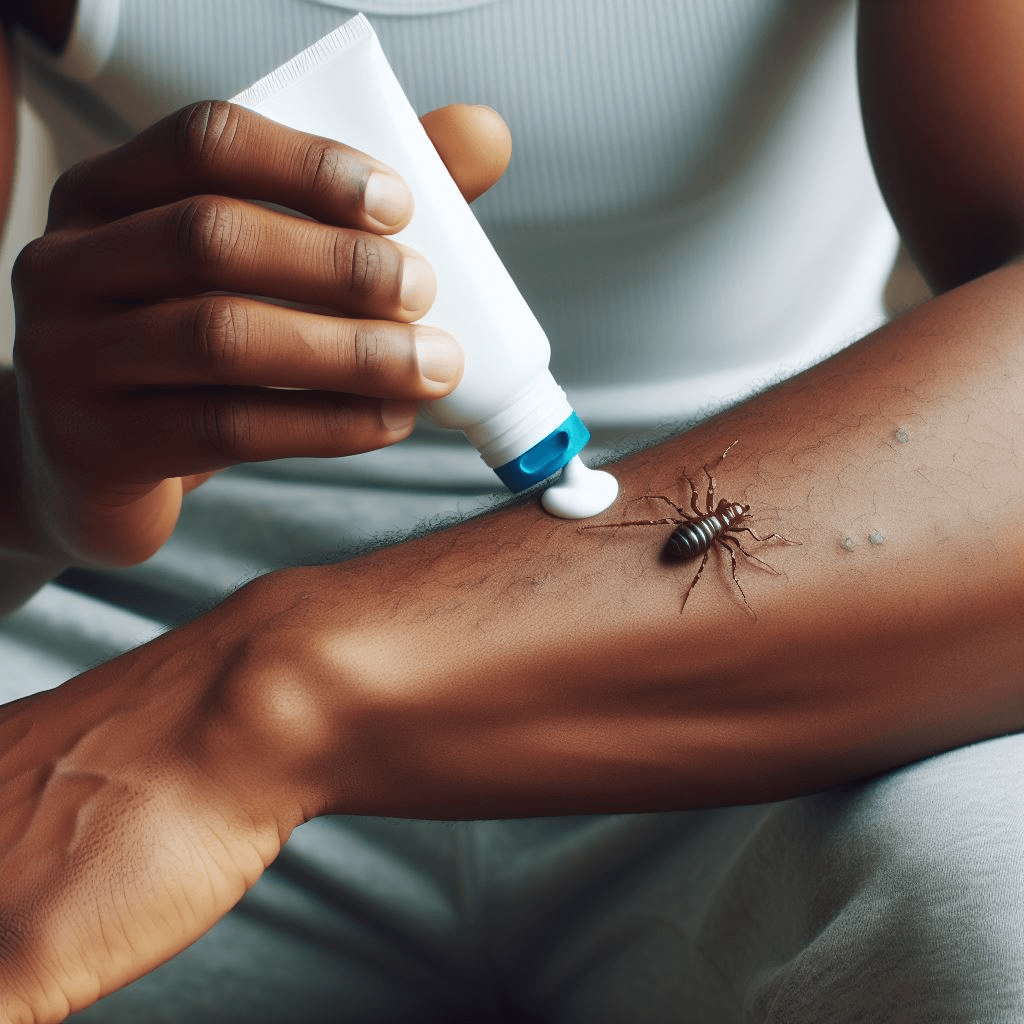Flea bites, oh those pesky little nuisances! These tiny, blood-sucking insects can wreak havoc not only on our beloved pets but also on us humans.
Fleas are usually found in the fur of household pets like dogs and cats, but they can easily latch onto humans and feast on our blood as well. These miniature vampires leave behind itchy reminders in the form of flea bites.
When a flea lands on your exposed skin, it uses its sharp mouthparts to pierce through and extract blood. As if that wasn’t bad enough, infected fleas inject saliva into the wound while feeding.
It is this saliva that causes the characteristic red bumps and itching associated with flea bites. Our bodies react to this foreign substance by releasing histamine, which triggers an inflammatory response resulting in swelling and discomfort.
Importance of treating flea bites promptly
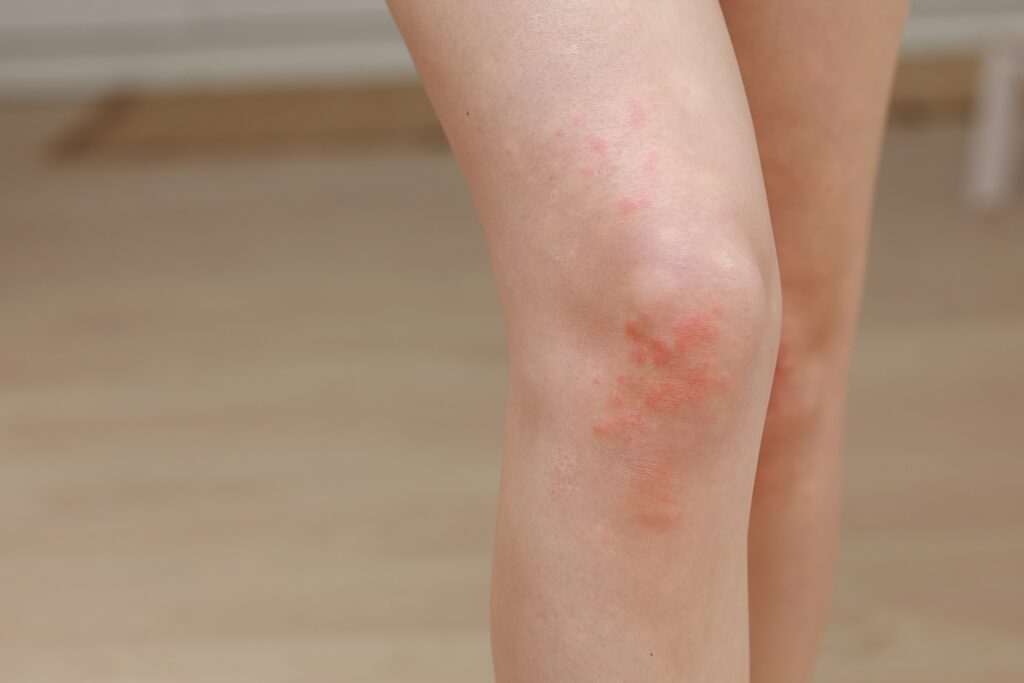
Treating flea bites might not be at the top of your to-do list when you’re dealing with these pesky parasites. After all, they catch fleas that are just small itchy bumps that will go away eventually, right?
Well, not so fast! Ignoring or delaying treatment for flea bites can lead to further complications.
Scratching incessantly at flea bites can break the skin’s barrier and introduce bacteria from dirty hands or nails into the open wound. This can lead to infection or even secondary skin conditions like cellulitis.
Additionally, some individuals may develop a severe allergic reaction known as hypersensitivity dermatitis in response to flea saliva. By taking prompt action against these biting bugs, you not only alleviate discomfort but also minimize the risk of infection and further complications.
So let’s dive into some tried-and-true methods for treating those bothersome flea bites! Remember: while this article focuses a few days more specifically on treating flea bites, it’s important to properly address any signs of a flea infestation.
Treating your pets and home for fleas is essential to prevent future bites and potential health risks. Now that we understand the basics of flea bites and the importance of timely treatment, let’s explore some immediate first-aid measures that can provide relief for these itchy nuisances.
Identifying Flea Bites
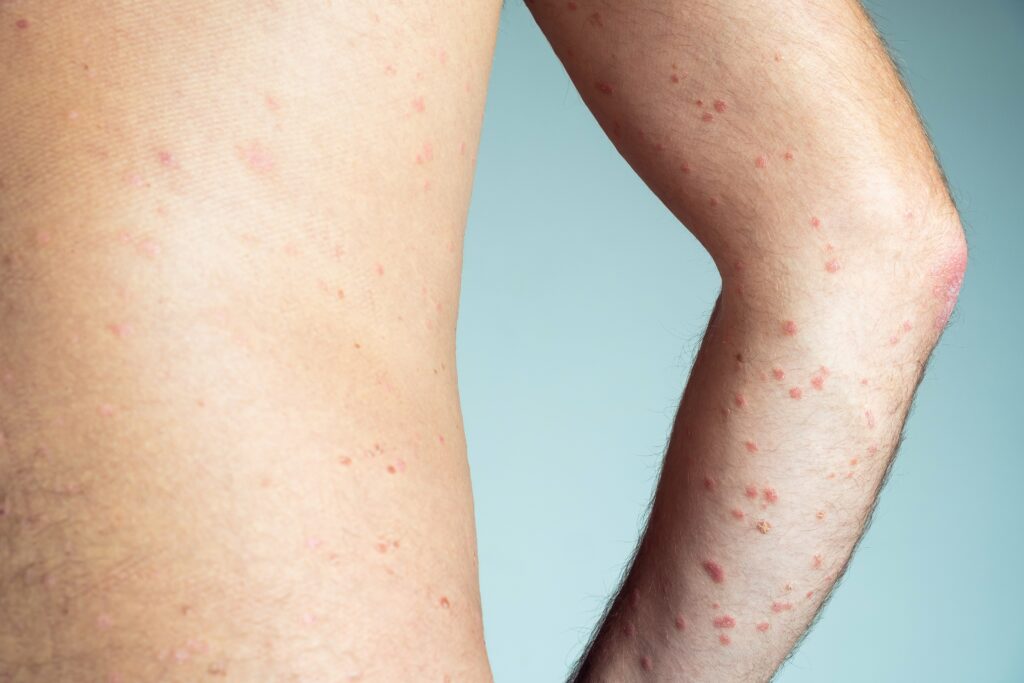
Description of typical appearance and characteristics
Flea bites on humans typically appear as small, red bumps on the skin. They are often surrounded by a slightly raised, reddish halo. These bites are usually found in clusters or lines, as fleas tend to only bite humans multiple times in a row before moving on.
Unlike mosquito bites, which can be random and scattered, flea bites tend to be in a more organized pattern. The size of flea bites can vary from person to person but are generally smaller than mosquito bites.
They may resemble tiny blisters with a red dot at the center. The intensity of itching caused by flea bites varies as well; some people may experience mild discomfort while others may have a strong urge to scratch.
Differentiating flea bites from other insect bites
Differentiating flea bites from other insect bites can be challenging because the initial reaction is often similar. However, there are a few key characteristics that can help distinguish them. One way to identify flea bites is by examining the pattern they create on the skin.
Flea bites usually appear in groups or lines, following a straight path along exposed areas such as ankles, lower legs, and waistline. This is because fleas tend to crawl up their victims’ bodies before biting.
Another distinguishing factor is the intense itching that accompanies flea bites. While mosquito bites can also itch, flea bite itchiness tends to be more persistent and severe for some individuals.
Additionally, if you suspect fleas in your environment due to pets or other signs of an infestation, it increases the likelihood that those itchy bumps on your skin are indeed from fleas. It’s important not to assume all insect-like bumps on your skin are flea-related though; bedbugs and mites can also cause similar reactions.
If you’re unsure about what’s causing these annoying welts, it may be best to seek professional advice or consult a healthcare professional to properly identify the source of rat fleas. Remember, identifying flea bites accurately is essential in treating them effectively and preventing future infestations.
Immediate First Aid for Flea Bites

Cleaning the Affected Area with Mild Soap and Water
Flea bites, although small in size, can cause considerable discomfort. The first step in treating flea bites is to gently clean the affected area with mild soap and warm water.
This helps remove any dirt or bacteria that may have accumulated on the skin’s surface. Make sure to use a gentle soap that won’t further irritate the bite.
Gently lather the soap on your hands and apply it to the bites using a soft cloth or your fingertips, taking care not to aggravate the area by scrubbing too vigorously. Rinse thoroughly with warm water and pat dry using a clean towel.
Applying a Cold Compress to Reduce Itching and Inflammation
After cleansing the flea bite, applying a cold compress can provide immediate relief from itching and reduce inflammation. You can make a simple cold compress by wrapping ice cubes or a bag of frozen vegetables in a thin towel or cloth. Place this makeshift compress on the affected area for about 10 minutes at a time.
The cold temperature helps numb the skin, providing temporary relief from itching caused by flea saliva while also reducing swelling. To create an even more soothing effect, you can try adding some essential oils known for their anti-inflammatory properties, such as chamomile or lavender oil, into your cold compress solution.
Simply mix a couple of drops of oil into water before freezing it in an ice cube tray. Remember that while applying a cold compress provides immediate relief for flea bites, it is only a temporary solution.
If you start experiencing severe allergic reactions or notice signs of infection like pus-filled blisters forming around the bites, it’s important to seek medical attention immediately. By cleaning flea bites with mild soap and water and applying cold compresses, you are taking crucial steps towards alleviating the discomfort caused by these pesky bug bites yourself.
However, it’s important to note that treating flea bites is only a part of the solution. To prevent future and stop flea bites yourself, you must address the underlying flea infestation and eliminate fleas from your home and pets.
Over-the-Counter Remedies for Flea Bite Relief
Topical creams containing hydrocortisone or calamine lotion
Flea bites can be incredibly itchy, causing a great deal of discomfort. Luckily, there are several over-the-counter remedies that can provide relief.
One popular option is topical creams containing hydrocortisone. Hydrocortisone is a mild corticosteroid that helps reduce inflammation and itching associated with flea bites.
These creams can be applied directly to the affected area, providing quick and targeted relief. Another effective over-the-counter remedy is calamine lotion.
Calamine lotion contains zinc oxide and iron oxide, which have soothing properties that can alleviate itching caused by flea bites. The cooling effect of calamine lotion also provides a comforting sensation on the skin, offering relief from the irritation caused by these persistent parasitic insects.
Antihistamine tablets or syrups to alleviate itching
If topical treatments aren’t providing enough relief from flea bite itching, antihistamines may be considered. Antihistamines work by blocking histamines, which are chemicals released by the body in response to an allergic reaction such as insect bites. By reducing histamine levels, antihistamines help alleviate itching and minimize the discomfort caused by flea bites.
There are several types of antihistamines available over-the-counter in tablet or syrup form. Some common examples include cetirizine, loratadine, and diphenhydramine.
It’s important to follow the recommended dosage instructions provided on the packaging or consult with a healthcare professional before using antihistamines to ensure proper usage and avoid potential side effects. When using any over-the-counter remedies for flea bite relief, it’s crucial to read and follow all product instructions carefully.
If symptoms persist or worsen despite self-treatment, it’s advisable to seek medical advice. Remember, while these remedies can provide temporary relief from flea bite itching, it’s also essential to address the root cause of the problem by eliminating fleas from your living environment and implementing preventive measures.
Natural Home Remedies for Soothing Flea Bites
Applying a Paste Made from Baking Soda and Water to Reduce Itchiness
When it comes to finding relief from those pesky flea bites, one effective and readily available remedy is a simple paste made from baking soda and water. Baking soda (sodium bicarbonate) possesses anti-inflammatory properties that can help reduce itching and soothe irritated skin. To create the paste, mix equal parts of baking soda and water in a small bowl until you achieve a thick consistency.
Once prepared, gently apply the paste onto the affected area using clean fingers or a soft cloth. Make sure to cover the entire bite site with a thin layer of the mixture.
Allow it to dry naturally on your skin before rinsing it off with warm water after 10-15 minutes. The alkaline nature of baking soda helps neutralize the pH level around the bite, minimizing irritation and providing welcome relief.
Dabbing Apple Cider Vinegar onto the Bites as a Natural Antiseptic
Another natural remedy that can work wonders in soothing flea bites is apple cider vinegar. This age-old household ingredient contains acetic acid, which acts as an antiseptic and helps prevent infection at the flea’s bite site.
Additionally, apple cider vinegar’s acidic properties create an unfavorable environment for fleas on your skin. To utilize this remedy, dilute raw apple cider vinegar with equal parts of warm water in a small bowl or cup.
Soak a clean cotton ball or cotton pad in this solution and gently dab it onto each flea bite, making sure to cover them completely. Allow your flea comb and skin to air-dry naturally after application.
The coolness of the liquid combined with its antiseptic qualities will provide temporary relief from itching while promoting healing. Remember that these home remedies are meant to alleviate discomfort caused by flea bites.
If you experience severe symptoms such as excessive swelling, persistent itching, or signs of infection, it is essential to seek medical advice. By incorporating these natural remedies into your first-aid routine, you can find soothing relief from those bothersome flea bites and help prevent further complications.
Prescription Treatments for Severe Flea Bite Reactions
Consultation with a healthcare professional for severe allergic reactions
It’s important to seek medical advice if you experience severe allergic reactions to flea bites. In some cases, individuals may develop an intense allergic response to flea saliva, leading to symptoms such as excessive swelling, blistering, or difficulty breathing.
If you notice any of these signs or symptoms after being bitten by fleas, consult a healthcare professional immediately. They will be able to assess the severity of the reaction and provide appropriate treatment options.
Prescription-strength corticosteroid creams or oral medications
In cases where flea bite reactions are severe, healthcare professionals may prescribe corticosteroid creams or oral medications. These medications work by reducing inflammation and suppressing the immune system’s response to the flea bites look like before.
Corticosteroid creams can be applied directly to the affected areas, providing targeted relief from itching and reducing redness and swelling. Oral corticosteroids are often recommended for individuals experiencing widespread or systemic reactions.
Preventing Future Flea Infestations
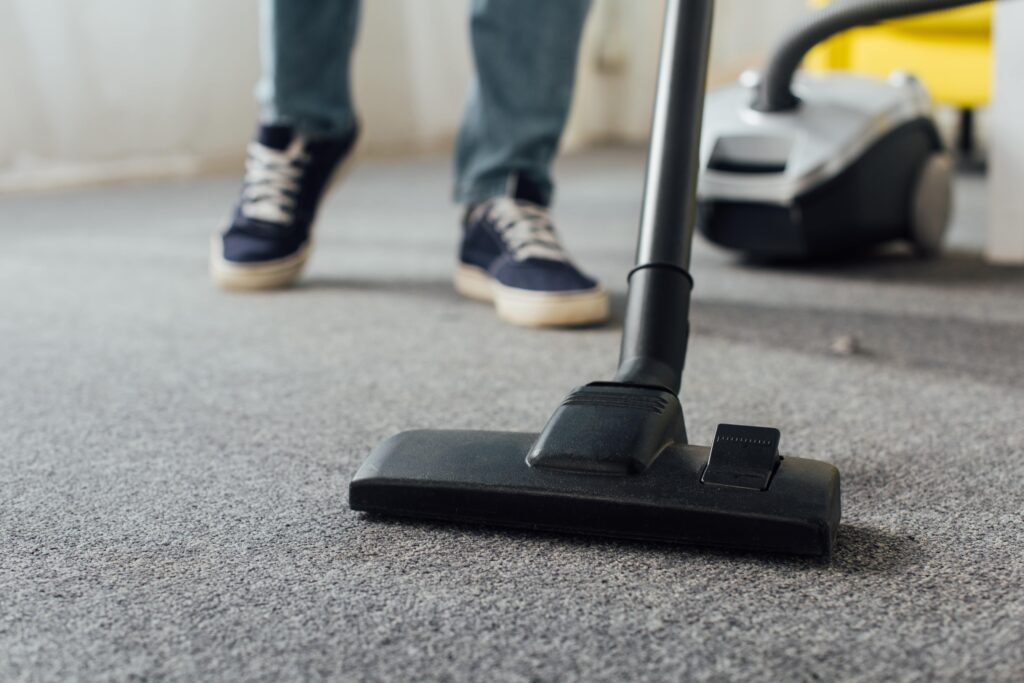
Regularly vacuuming carpets, furniture, and pet bedding
To prevent future flea infestations in your home, it is crucial to maintain cleanliness and regularly vacuum carpets, furniture, and pet bedding. Fleas tend to lay their eggs in these areas where they can easily hatch into new adult fleas. Make sure to empty the vacuum bag properly after each use as fleas can survive inside it.
Treating pets with veterinarian-approved flea control products
Since household pets are often carriers of fleas into our homes, it is vital to treat them with veterinarian-approved flea control products regularly. These flea-borne disease products come in various forms such as spot-on treatments or oral medication designed specifically for dogs and cats. By keeping your pets protected from fleas, you significantly reduce the chances of flea bites on humans.
Uncommon but Effective Remedies for Treating Flea Bites
Applying toothpaste on the affected area to relieve itching temporarily

While not a conventional remedy, applying a small amount of toothpaste on flea bites can provide temporary relief from itching. Toothpaste contains certain ingredients like menthol or baking soda, which have a cooling effect and can help soothe the itchiness caused by flea bites. However, it is important to note that this method may not work for flea bites itch everyone and should not replace proper medical treatment if needed.
Using essential oils like lavender or tea tree oil mixed with carrier oil
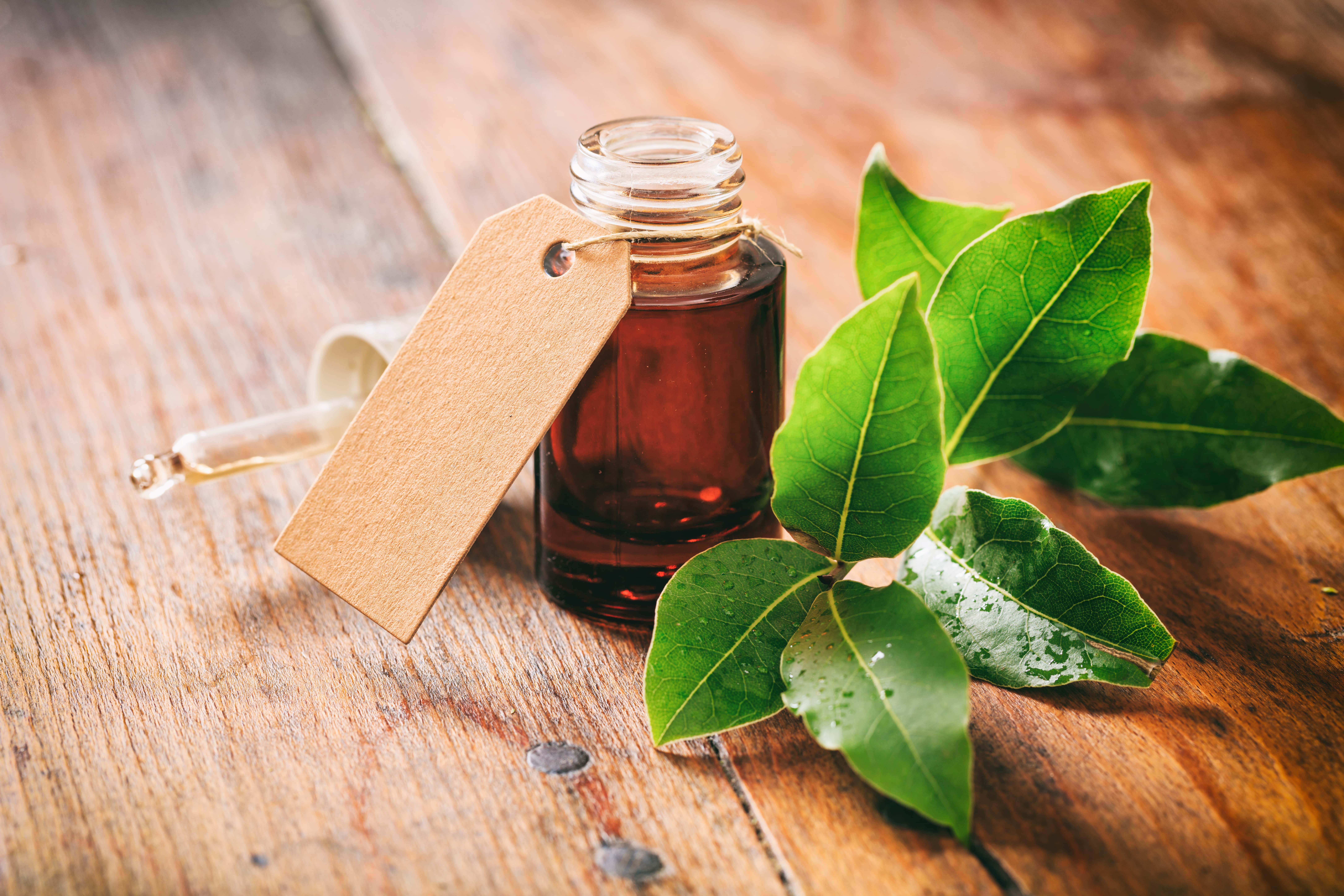
Essential oils have gained popularity for their potential insect-repellent properties. Mixing lavender or tea tree oil with a carrier oil, such as coconut or almond oil, and applying it to the flea bite area may help alleviate itching and promote healing.
These oils possess natural anti-inflammatory and antimicrobial properties that could provide some relief. However, it’s crucial to remember that essential oils should always be diluted properly before application to avoid skin irritation.
Conclusion
While treating flea bites on humans can be challenging, there are various approaches you can take to find relief from itching and promote healing. From over-the-counter creams and natural remedies to prescription treatments for severe reactions, there are options available depending on the severity of your symptoms. Remember to consult a healthcare professional if you experience severe allergic reactions or have concerns about your condition.
By taking proactive measures in preventing future dog flea infestations through regular cleaning practices and appropriate pet care routines, you can minimize the risk of encountering these pesky parasitic insects in your home. Additionally, experimenting with uncommon but effective remedies such as toothpaste or essential oils may offer temporary relief for milder cases.
While dealing with flea bites can be bothersome, it’s important to approach the situation with patience and follow the necessary steps to alleviate discomfort. Seeking medical advice when needed and implementing preventive measures will not only help you get rid of fleas effectively but also ensure a safer and more comfortable environment for both, you and your household pets.
Wipe Out Fleas with D-Termination: The Top Pest Control Service in Las Vegas!

If you’re facing flea issues on your Las Vegas property, D-Termination is your solution. Our experienced team excels at eradicating flea infestations, bringing back comfort and tranquility to your environment. Bid farewell to fleas—opt for D-Termination for reliable pest control today!
Reach out to us at 702-919-6310 or visit dtermination.com to schedule your flea control service and regain your space from these troublesome pests.
Frequently Asked Questions:
The fastest way to heal flea bites on humans is to clean the affected area, apply an antiseptic, and use over-the-counter anti-itch creams.
Flea bites usually last a few days to a week, but the exact duration can vary from person to person.
Yes, fleas can infest your bedding, so it’s essential to wash and clean your bedding regularly to prevent this.
To get rid of fleas that are biting you, you should treat your pets, clean your home, and use flea repellents or traps to reduce their presence.

